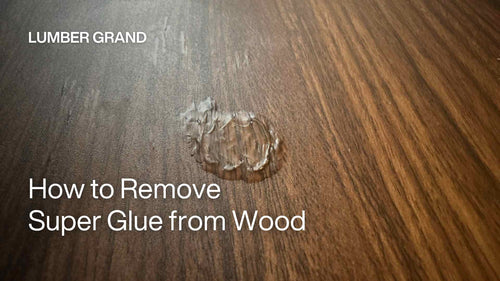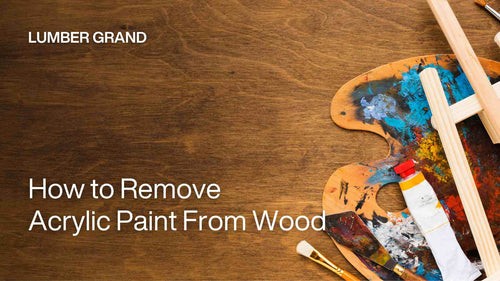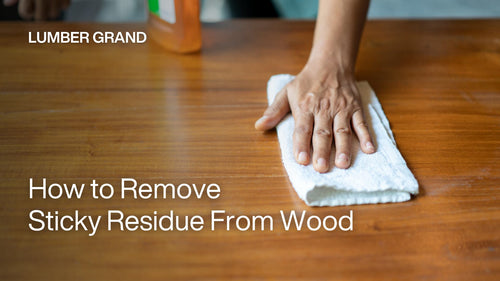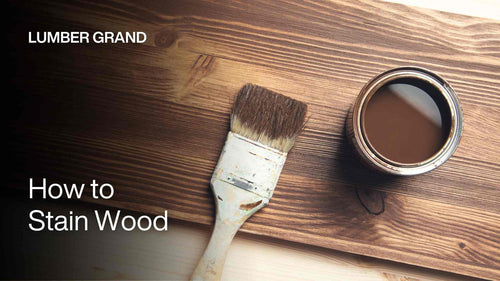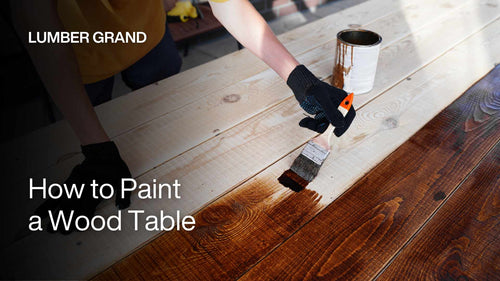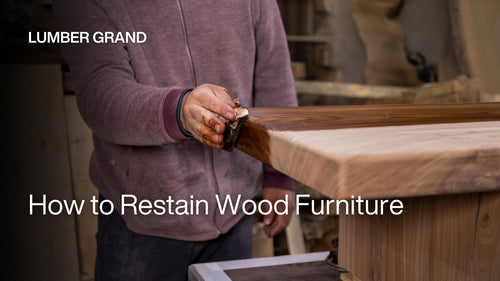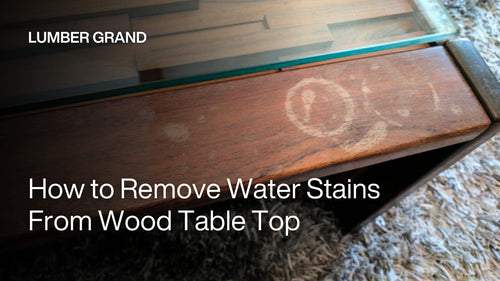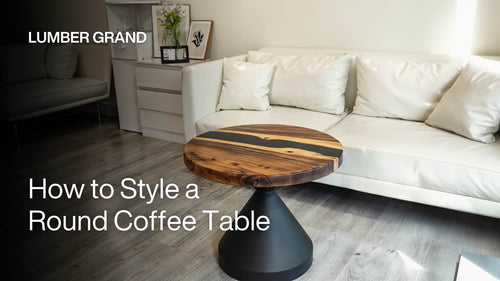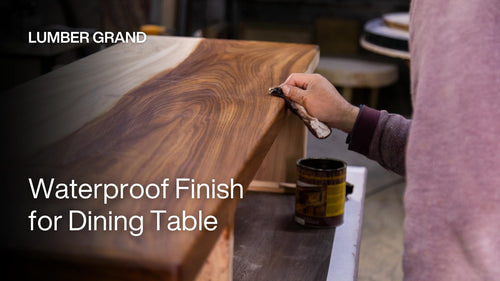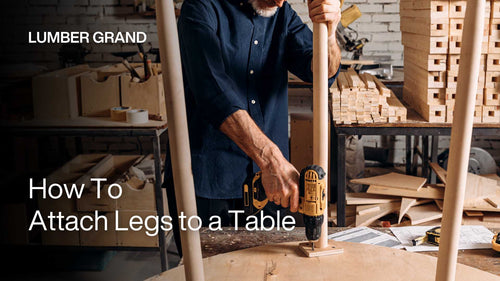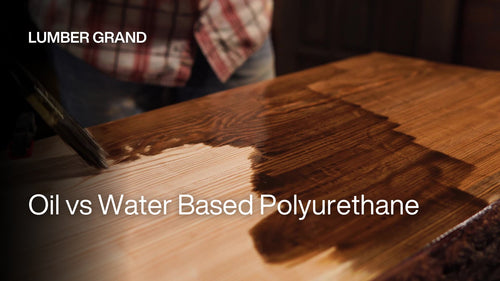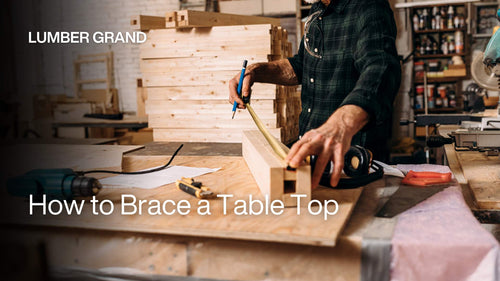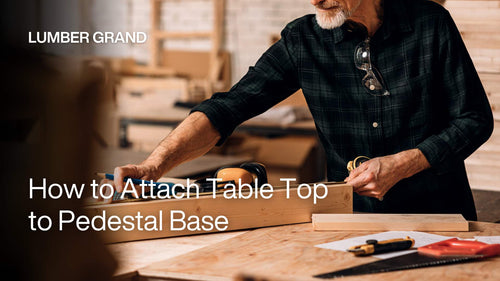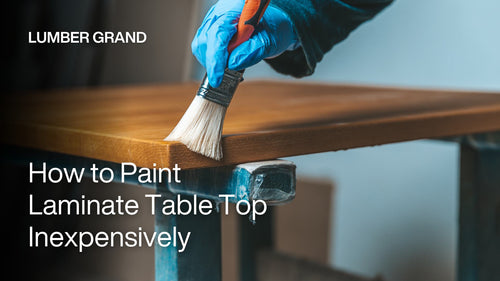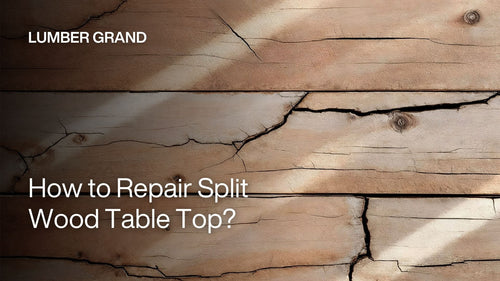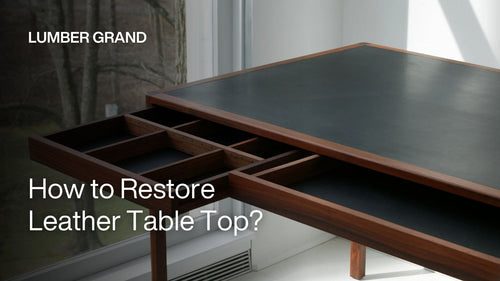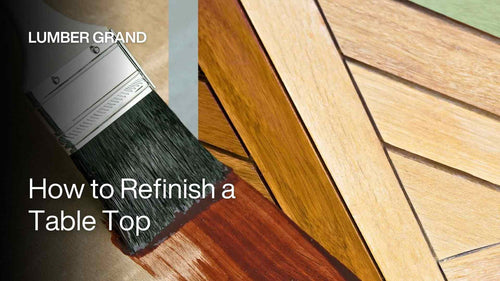Looking for a detailed guide on how to make a mold for epoxy resin table? This detailed guide will walk you through how to make one while covering everything you need, from materials and tools to helpful tips. Whether you are an amateur or not, Lumber Grand guides will show you everything you need.
Why You Should Make a Mold for an Epoxy Resin Table?
The mold is the foundation for the epoxy resin, which hardens into your desired shape. Furthermore, the mold also creates smooth edges and prevents any resin leakage during the process. Without a well crafted mold, you risk uneven or messy pours, thus making your epoxy table top rough and jagged, requiring additional sanding.
 A well crafted mold ensures smooth edges and prevents resin spills
A well crafted mold ensures smooth edges and prevents resin spills
Photo: Etsy
Materials & Tools
Most importantly, you have to select the right materials. There are several epoxy resin mold materials to choose from, each with its properties:
-
Wood: Some of the recommended woods are melamine, plywood or MDF.
-
HDPE plastic: HDPE plastic is another great option, as it hardly sticks to resin. Not only that, but it is reusable, ideal for multiple projects.
-
Silicone: Silicone molds, on the other hand, are perfect for smaller projects and more complex molds but are more expensive and less suitable for larger tables.
-
3/4” Melamine: Melamine is durable, easy to cut, and provides a smooth surface for your mold base. Just make sure to seal it properly to avoid any resin leaks during the pouring process.
-
Mold release: Mold release is a must for epoxy removal. A quick spray ensures the resin won't stick to your mold, letting you reuse the mold for future projects.
-
Tape measure: A tape measure gives accurate measurements to ensure your mold fits perfectly with your project and helps prevent any messy resin spills.
-
Circular saw or table saw: A circular saw or table saw is your tool for cutting melamine (or other materials) to the right size.
-
Rags or cloth: Rags or cloth are used to apply the mold release agent evenly across the surface of the mold.
Thus, it is important to consider the size and style of your table top before choosing the fitting material. Additionally, tools like a saw, drill, tape measure, and level are necessary for a smooth working progress. After assembling the mold, use sandpaper to sand out rough edges, making sure it is ready for the epoxy table top creation.

Choose the right materials and tools to craft a high-quality mold that suits your project
Photo: Acrylgiessen
How to Make a Mold for Epoxy Resin Table?
When you're learning how to make a mold for epoxy resin table for your projects, you should follow a clear process to ensure everything is as desired. Follow this simple 8 steps guide for creating the perfect epoxy resin mold:
1. Step 1: Determine the Right Size
The first step to learn how to make epoxy mold is to figure out your final desired size. Once it is determined, add 1-2 inches extra to both the length and width. This accounts for any expansion that may occur during the resin pouring process, which might make a mess if an overspill happens.
 Add 1-2 inches to your table's dimensions to prevent resin spills
Add 1-2 inches to your table's dimensions to prevent resin spills
Photo: ©Oni Media on Canva.com
2. Step 2: Cut the Base
The next step is to make the base from a ¾ inch melamine. Melamine is a solid choice for creating clean, sharp edges due to its smoothness. The base should be large enough to satisfy your determined size, which should include the couple of inches you have added. Be sure to double-check your measurements for a smooth project.
 Cut the base from melamine for a smooth, sturdy foundation
Cut the base from melamine for a smooth, sturdy foundation
Photo: Curbly
3. Step 3: Prepare the Sides
The sides of your epoxy resin table mold also need to be prepared. Make them at least 1 inch taller than the thickness of your table. Taller sides prevent any resin from overflowing and make a cleaner, more controlled pour.
Let me give you example, if you want to make an 80x40 inch table, you have to make a mold that is 82x42.
4. Step 4: Assemble the Mold
First, use caulk prepared before to seal the edges. To secure the mold further, you can use nails or screws. Remember to use brad nails or screws to hold everything together for the structure to be stable and solid. Finally, check for stability and ensure the mold feels secure and doesn’t shift. Add more nails or screws if needed.
5. Step 5: Seal the Seams
The joints also need to be sealed carefully too. Apply caulk to every seam, both inside and outside the mold, to prevent leaks. Then, double-check for gaps. If you find any, add more caulk. Finally, use your finger or a tool to smooth the caulk and ensure a clean, sealed surface.

Make sure to apply caulk generously to all the seams to prevent any resin leaks.
Photo: The Spruce
6. Step 6: Let the Caulk Cure
After applying the caulk, let it cure for 6-8 hours, if possible overnight. This way gives the caulk enough time to set fully, ensuring that the mold is strong and sealed.
7. Step 7: Apply Mold Release
To apply the mold release agent, spray a light, even coat on the inside surface of the mold. Make sure to cover every corner, edge, and seam where the resin may come into contact.
For better coverage, you can use a clean rag or cloth to wipe the agent across the mold, ensuring it’s applied evenly. This step will make it much easier to remove the cured epoxy from the mold without sticking.
8. Step 8: Ready for Epoxy Pouring
With the mold secured in place, now it’s time to pour in the resin. Once the resin is set and cured, you will be able to remove it from the mold easily.
Once you have your epoxy table top mold, you can create your own epoxy coffee table tops in various styles.
 Some DIY epoxy wood table inspiration that you can refer to!
Some DIY epoxy wood table inspiration that you can refer to!
Photo: Lumber Grand
Shop now: 35-Inch Round Epoxy Dining Table
Tips & Tricks for Better Epoxy Molding
There are a few things to remember when epoxy molding. Be aware that you should always spray your mold with mold release spray before pouring in the resin. This prevents it from sticking and makes the process a whole lot easier. If you use wood to make the mold, line the inside with plastic so the resin can flow out more easily.
You have to make sure you mold sand off any rough edges or bumps in order to get a smooth mold, which helps create a clean surface. Finally, make sure your mold is always on a flat surface during the process.
FAQs About Making a Mold for Epoxy Resin Table
1. How to Build a Rectangular Epoxy Table Mold?
Have you ever wondered how to epoxy a table top? Follow these 5 steps to create a rectangular resin table mold:
-
Step 1: Make melamine, HDPE, (or your preferred material) panels that will form the base and side walls of your mold. Ensure the size satisfies the dimensions of your desired table.
-
Step 2: Using screws or clamps to assemble the frame and secure the panels together.
-
Step 3: Use a sealant (such as silicone sealant) along all interior seams to prevent resin from leaking.
-
Step 4: Coat the interior of the mold with a mold release spray.
-
Step 5: Let the sealant dry completely before pouring the epoxy resin in to ensure a smooth, not leak-free.
2. How to Make a Round Mold for Epoxy Resin Table?
Creating a round resin mold requires extra preparation. Follow these 5 steps to learn how to make a round mold for epoxy resin table:
-
Step 1: Make a circular base using melamine or HDPE plastic with a jigsaw. Be sure to cut it in your desired diameter.
-
Step 2: Cut a flexible strip of HDPE or thin melamine to form the sidewall of the mold. This will wrap around the circular base to create the round shape.
-
Step 3: Attach the sidewall to the base using screws or a strong adhesive. Ensure the sidewall is perfectly aligned to avoid any leaks.
-
Step 4: Seal all edges with silicone caulk to prevent resin from seeping through the seams.
-
Step 5: Spray the interior with mold release to make sure the epoxy resin will release easily after curing.
If you’re looking for high quality tools or need a bit more guidance along the way, feel free to reach out to us at contact@lumbergrand.com.
Now that you know how to make a mold for epoxy resin table, you can create a mold in a professional, smooth manner every time. Just put in some time, patience, and attention to detail. Whether you are building a functional piece or a show stopping centerpiece, Lumber Grand hopes your epoxy resin table turns out just as unique and beautiful as your vision. Happy crafting and enjoy the process!









